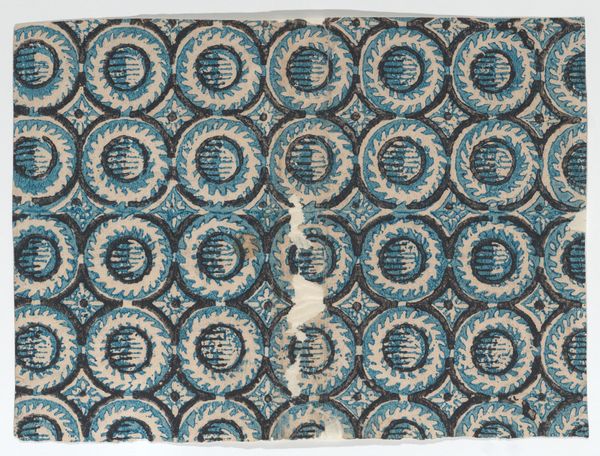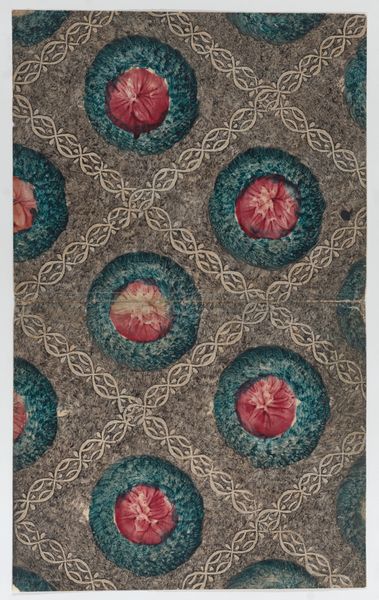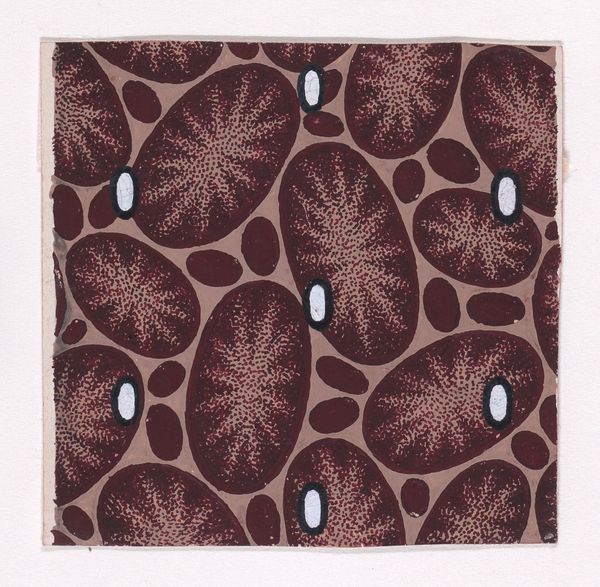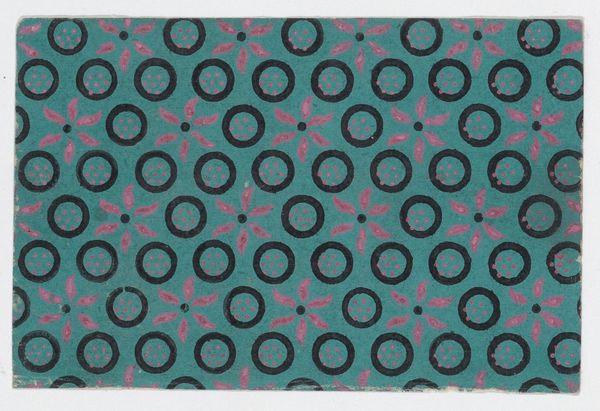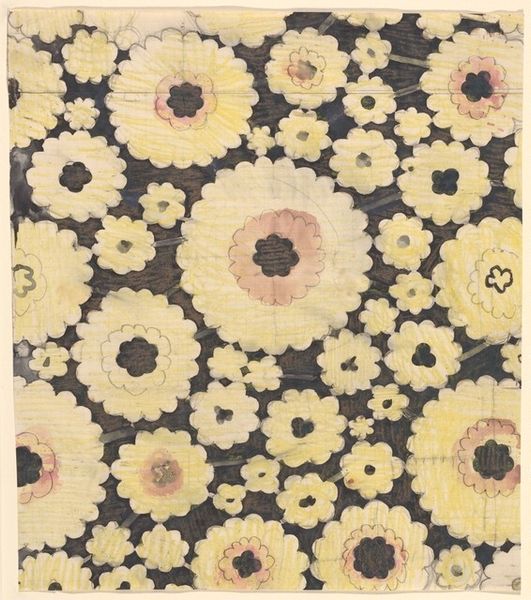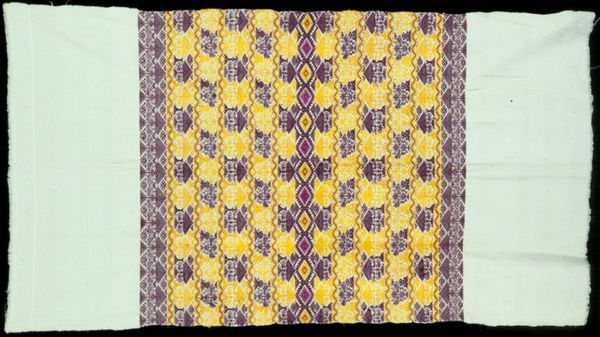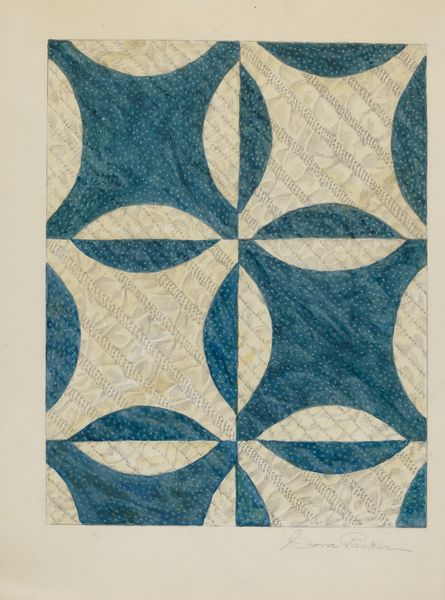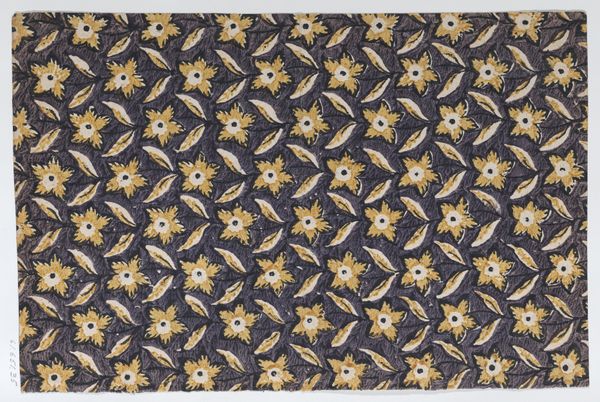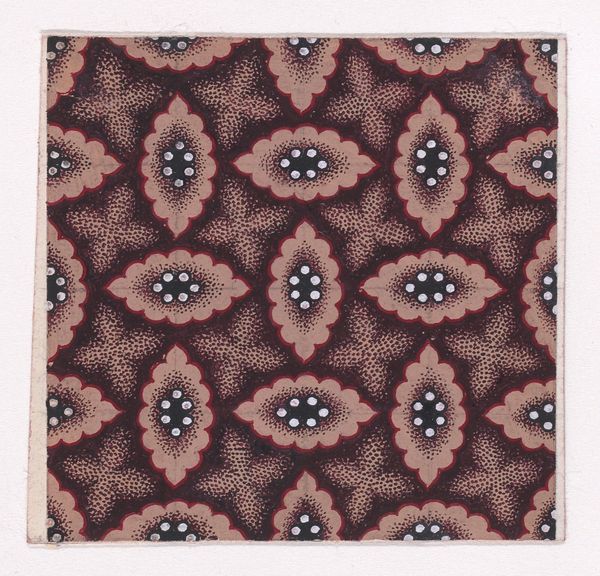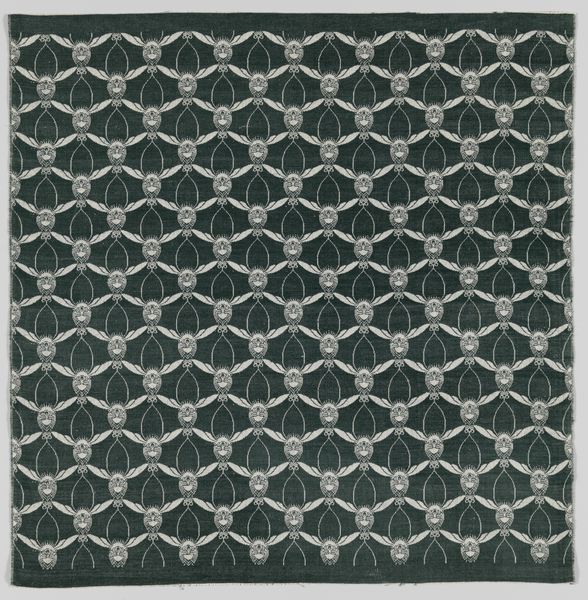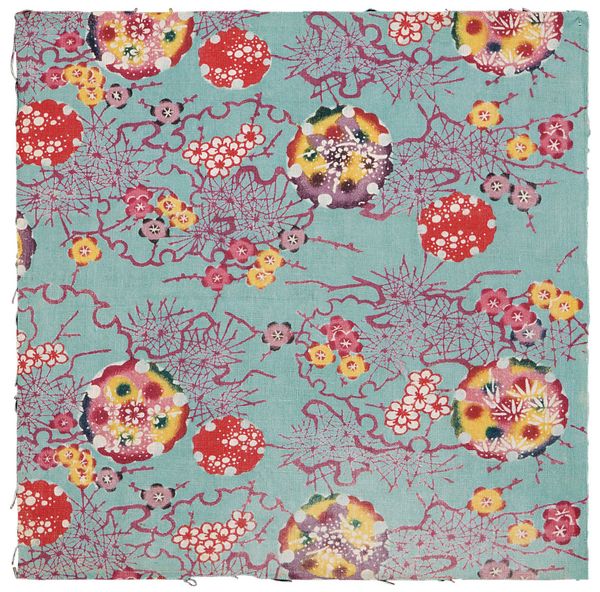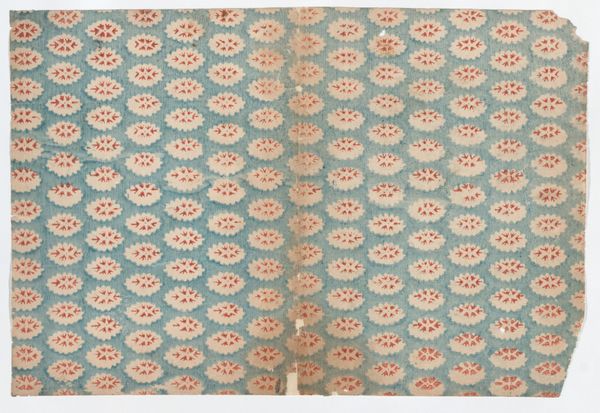
Udkast til et loft med cirkelrunde kassetter, afvekslende i gult og violet på blå bund 1743 - 1809
0:00
0:00
drawing
#
drawing
#
pattern
#
geometric
#
academic-art
#
decorative-art
Dimensions: 172 mm (height) x 172 mm (width) (bladmaal)
Editor: This drawing, "Udkast til et loft med cirkelrunde kassetter, afvekslende i gult og violet på blå bund," by Nicolai Abildgaard, looks like a ceiling design. It dates from around 1743-1809. The circles and diamonds remind me of wallpaper. What catches your eye about this drawing? Curator: I see a record of production and consumption in 18th-century Denmark. Notice how the geometric patterns – circles, diamonds, floral motifs – mimic luxury items? They’re not just abstract forms, but stand-ins for the expensive materials used in lavish interiors. The artist wasn’t creating “high art,” but a blueprint, a guide for skilled labourers to realize a decorative scheme. Editor: So it's more like a technical drawing? Does the fact that it’s just a sketch affect its status as a work of art? Curator: Not at all. The sketch *is* the artwork. It showcases the conceptual labour behind the production of opulent spaces, revealing the system of patronage and skilled craftsmanship that drove the decorative arts. Look at the precision – it demands both artistic skill and a thorough understanding of material constraints. Do you see evidence of planning and measurement in this piece? Editor: Now that you mention it, yes. The faint gridlines indicate meticulous planning for a repetitive design. Curator: Precisely. Think about the social context: Abildgaard designed for an elite class that consumed such luxury. His drawing facilitated the work of artisans, effectively participating in a system where skill and labor served status. Editor: I see what you mean! It reframes how we think about design and its relationship to both labour and social class. Curator: Indeed. This drawing becomes a powerful lens through which to understand not just aesthetics, but the complex network of production and consumption in 18th-century society.
Comments
No comments
Be the first to comment and join the conversation on the ultimate creative platform.

